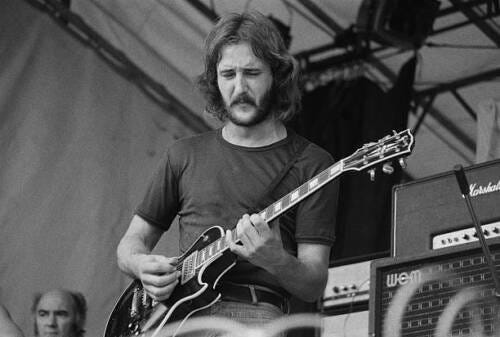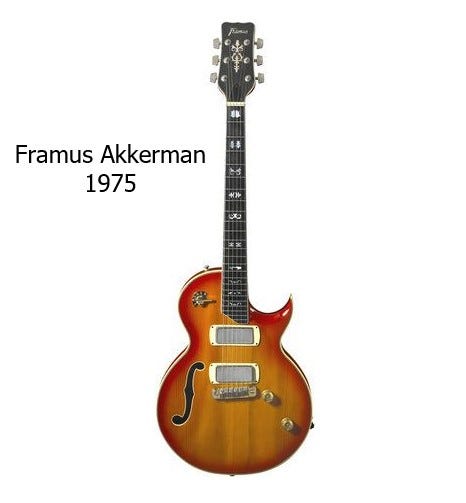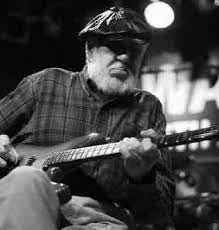“Lick Of The Week” with Stevie K
Turnarounds are commonly used to take you back to the beginning of the next verse or as a closing remark.
This turnaround is in the key of A7, one shape in two zones. One is for the verse and the other is for the finish. Sometimes the best strategy is knowing where you end up.
Steve Kuykendall is a lifelong musician and remains an active indie artist and teacher. His music is available on Amazon, Apple Music, and Spotify.
You may also find Steve on Cedro Rosa and as an active member of the guitar community on Linkedin.
The town of Schönbach Germany was a hotbed for violin and other string instrument builders for generations. This is where Fred Wilfer, the founder of Framus, was born in 1917.
After WWII that part of Germany was to be controlled by Russia so Wilfer concocted a plan with Bavarian officials to relocate the craftsmen from Schönbach and start a manufacturing facility in Erlangen, Bavaria.
The original bread and butter of the company was violins. However, as western instruments were growing in popularity in the late 1940s and rock n’ roll was taking off, Wilfer steered his company to the production of acoustic and electric guitars. That turned out to be a very smart move and Framus went on to become one of the largest guitar manufacturers in Europe by the mid 1960s.
Like many guitar manufacturers after the 1960s guitar boom, fortunes changed and the company found itself on the verge of bankruptcy early in the next decade. In a desperate move Framus approached guitarist Jan Akkerman of Focus about a signature model in 1972.
The following year Akkerman was voted best guitarist in the world by readers of the UK Magazine “Melody Maker” so Framus’ timing was spot-on. However, it would not spare the company from default in 1975.
Nevertheless, in 1974 the Akkerman signature model hit the streets with a price higher than a Les Paul Custom.
It featured a set neck with a chambered maple body leaving a center block much like a Gibson ES-335. The top had a carved maple cap. And it’s a beast, being 2 ⅜” thick and weighing in around 9lbs.
Exhibiting an enlarged Les Paul body and semi-hollow construction this guitar was built to go toe-to-toe with Gibson, and the six-position rotary dial surpassed Gibson’s standard 3-way selector, incorporating a coil split and phase switch. The Framus Akkerman remained in production until mid 1976 when the company was fully dissolved.
The pickups were designed by Bill Lawrence of Gibson Super Humbucker fame. He also helped design Gibson’s L6-S, S-1 and Marauder guitars (the latter two were not great sellers). The Lawrence/Framus connection is deep. Prior to migrating to the United States, Bill was a highly acclaimed jazz guitarist from Germany and became Framus’ first signature artist in 1953 at the age of 22.
Framus Akkerman specs: Maple body, Maple set neck, Ebony fretboard, Six position rotary dial, One volume and tone, Bill Lawrence pickups





